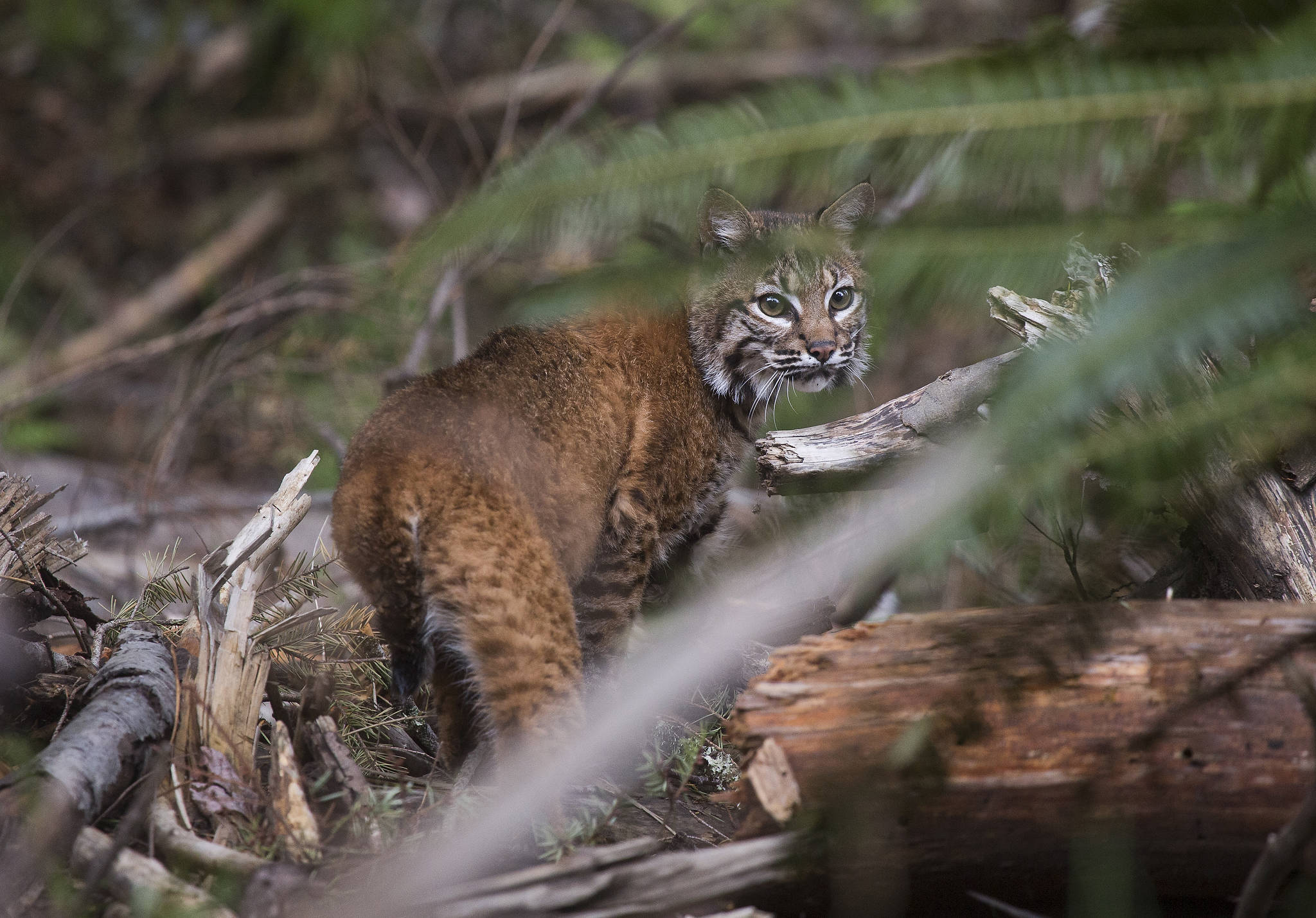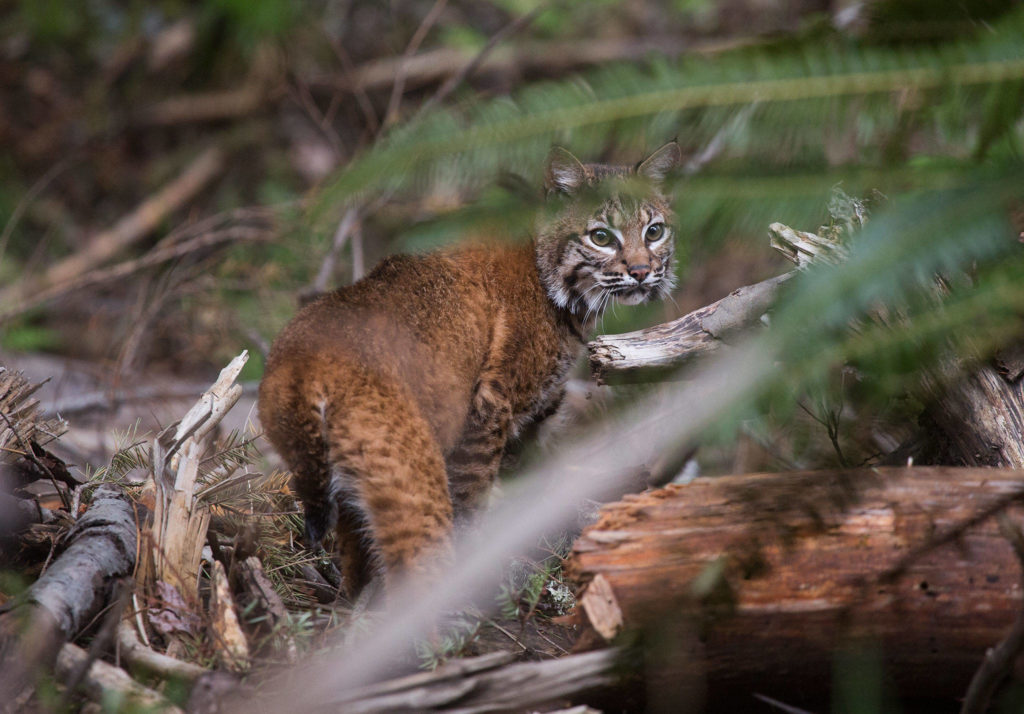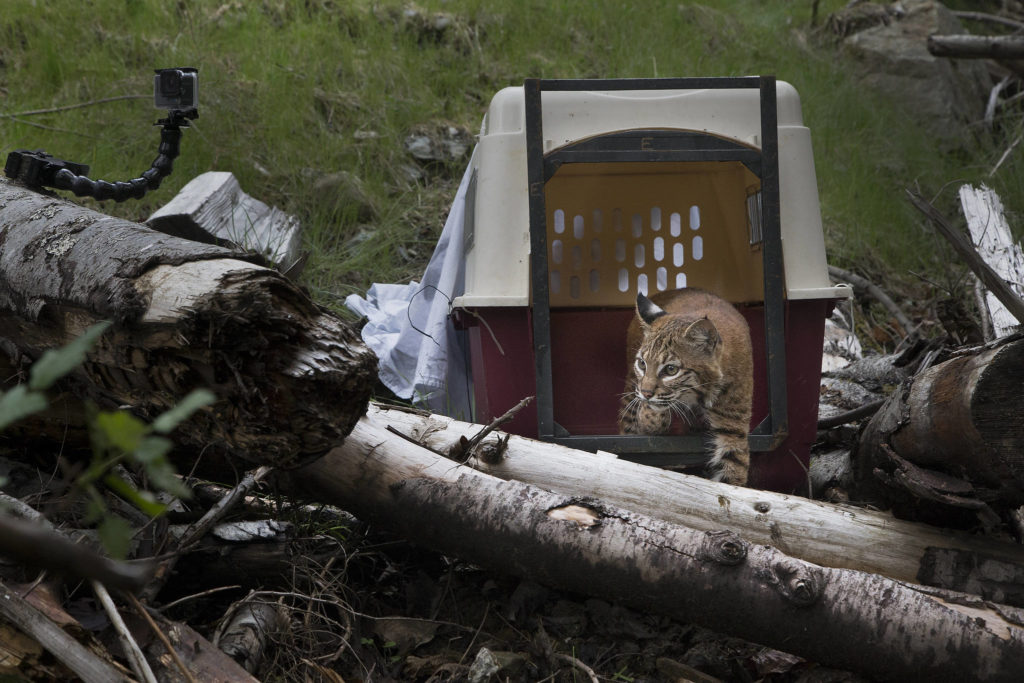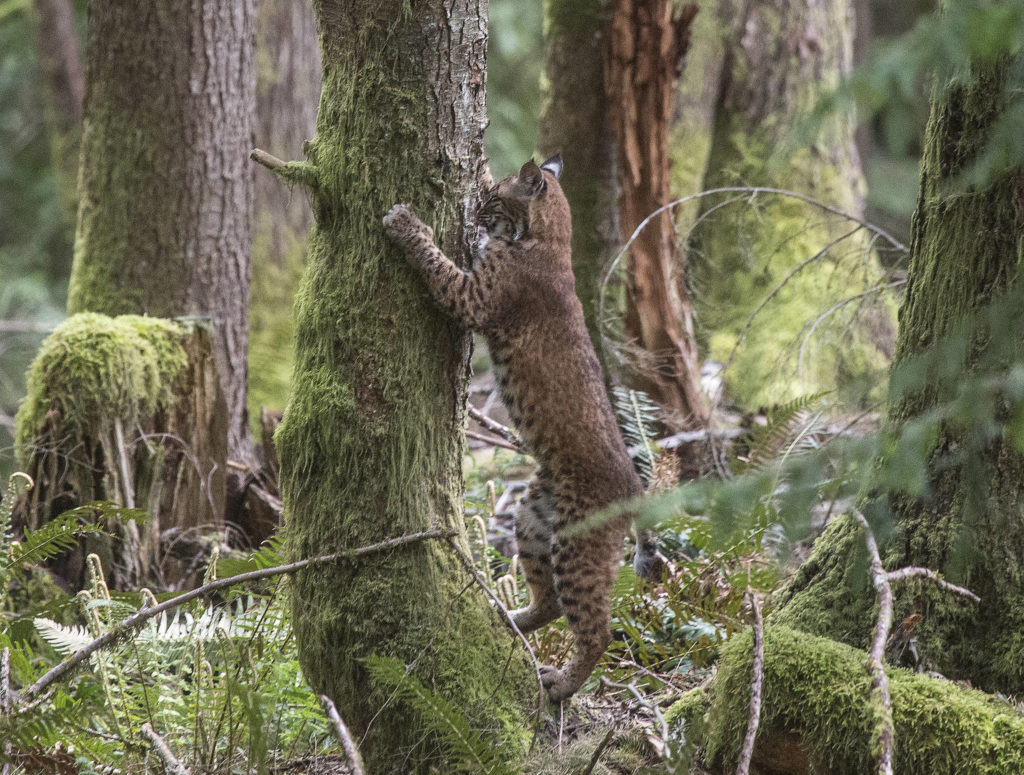ACME, Whatcom County — If you looked the other way, you might’ve missed them.
The first two bobcats coiled up like springs in their kennel, then launched out into the wild outside Acme in a blur of fur.
The third, who had a kennel to herself, took her time. She crept out cautiously, turned her head to look at the humans gathered behind her — just for a moment — then casually trotted away.
It’s likely they’ll never be seen again. Bobcats are as elusive as their namesake tails are short. They’re nocturnal creatures with a healthy wariness of humans.
Almost a year ago, these three were orphaned kittens, thin and dehydrated and one nearly emaciated, with no mothers in sight. They were found individually, in Bellingham, Snohomish and Woodinville. Last July, they were all brought to PAWS Wildlife Center just north of Lynnwood, one of the only facilities in the state that rehabilitates bobcats until they’re ready to be reintroduced to the wild.
The kittens bounced back fast, said Emily Meredith, the wildlife rehabilitation manager with PAWS. They took to eating and drinking easily, and they were introduced to one another without much fuss. Soon, they became like one, a “three-headed bobcat,” spending all their time together.
When raising orphaned wildlife, it’s important to group together animals of the same species, Meredith said. Typically, it’s the mother that teaches the ins and outs of being a bobcat, like how to hunt for prey and escape danger. Without a mother, the three kittens relied on each other to figure out what being a bobcat was all about.
Staff did what they could to help. They frequently changed the layout of the bobcats’ apartment-sized enclosure, rearranging the hammocks and trees and pools of water so the cats would have something new to explore. And staff would hide “prey” — usually already dead, but occasionally alive — so the cats would have to hunt out their food.
Bobcats are generalist hunters, meaning they’ll eat just about anything they can catch, said Jeff Brown, a naturalist with PAWS. Think rabbits and rodents and small birds. Even snakes and lizards are fair game, if that’s all there is to be found.
Snow last winter gave the bobcats something new to do. In a video posted on YouTube, they can be seen zooming and rolling around and crashing into each other.
The wild animals that come through PAWS don’t have names, so staff and volunteers won’t get too attached. Instead, they’re identified by numbers, given to them in the order they’re taken into the facility.
These three bobcats happen to be three distinct sizes, so for the sake of convenience they were also referred to as the big one, the small one and the medium-sized one.
Staff were careful not to interact directly with the bobcats, acting instead as invisible benefactors, only going into the enclosures when the animals were in a separate space, Meredith said. For wildlife, getting comfortable with humans can be dangerous, and sometimes deadly.
PAWS has rehabilitated at least 31 bobcats. The number is likely higher, but the data don’t go back to when PAWS’ first started helping wildlife in 1981.
Back then, that part of unincorporated Snohomish County north of Lynnwood wasn’t the sprawling, dense suburbia that it is today. It was quieter and felt more remote, PAWS CEO Heidi Wills said.
“That was fine in the 1980s,” she said, “but now we really do need to seek this new plan for the next 50 years.”
The “new plan” is a 25-acre property out in Cathcart, where the nonprofit is planning to build a much bigger wildlife center. Out there, PAWS will have a bigger hospital, bigger enclosures and more office space. Animals will have more room to roam, and veterinarians will be better equipped to care for those that are sick and injured.
After raising $25 million, progress on the hospital is already underway, and it is expected to be operational by the end of the year. Wills said they’re just waiting on a building permit, which should be approved any day now.
Wills expects to start a big fundraising push for the next phase — the enclosures where the animals will stay — as soon as next month.
PAWS got its start taking care of dogs and cats, but throughout its history staff have cared for a range of animals, including bears, cougars, otters and eagles. In 2020, staff helped rehabilitate more than 4,200 wild animals, encompassing 169 species. And that was in a down year, when a global pandemic meant fewer volunteers and fewer opportunities to raise money.
With more people staying home and being outside, Meredith said, she’s seen a significant increase in the number of calls related to wild animals. She encouraged people to always call first so an expert can make sure the animal actually needs help. PAWS Wildlife Center can be reached at 425-412-4040.
As for the three young bobcats, May turned out to be the perfect time to release them, Brown said. They’re about the age bobcats would be when they typically strike out on their own, and in the spring, their natural prey is young and plentiful, making for an easy transition.
In preparation for returning the cats to the woods, they went through their typical health checks, and they’re given any vaccinations and de-wormings they need.
They also got tested for COVID-19, in light of news of other big cats catching the virus — like Azul, the Malayan tiger that now calls the Woodland Park Zoo home.
For the release last week, Chris Danilson, a wildlife biologist with the state Department of Natural Resources, picked a piece of land near Acme, in the Skookum Creek Watershed. He and the PAWS team took the bobcats up long gravel roads that opened into views of the Cascades, as well as timber operations.
Logging activity in the region, incidentally, gives the bobcats a good shot at survival, Danilson said. With the leftover piles of wood debris, there are plenty of hiding places to attract rodents and other critters, he said.
Being careful to reduce the chances of the bobcats catching COVID-19 before they’re released, Danilson and Brown donned Tyvek suits, gloves, face masks and face shields. They moved the kennels one by one, navigating their way around a large wood pile, to the release site.
The first kennel was quiet.
The second shook in their hands as the two bobcats inside growled and hissed, apparently upset or at least confused by their predicament.
Then, Danilson and Brown opened the crates.
The bobcats were gone.
Well, almost gone. One stuck around.
She jumped on a log and took some time to lick herself. Then she wandered over to a tree and sharpened her claws on it.
Eventually, she faded from view, her fur blending in with the forest.
If all goes as planned, a human will never lay eyes on her again.
Zachariah Bryan: 425-339-3431; zbryan@heraldnet.com. Twitter: @zachariahtb.
Want to help?
For more information about donating to or volunteering with PAWS, visit paws.org.
Talk to us
> Give us your news tips.
> Send us a letter to the editor.
> More Herald contact information.





























